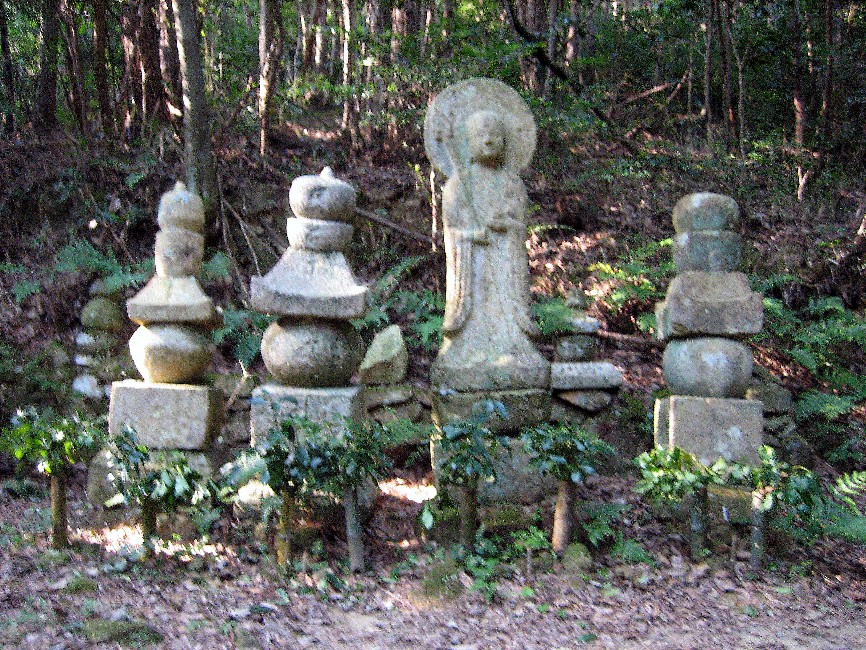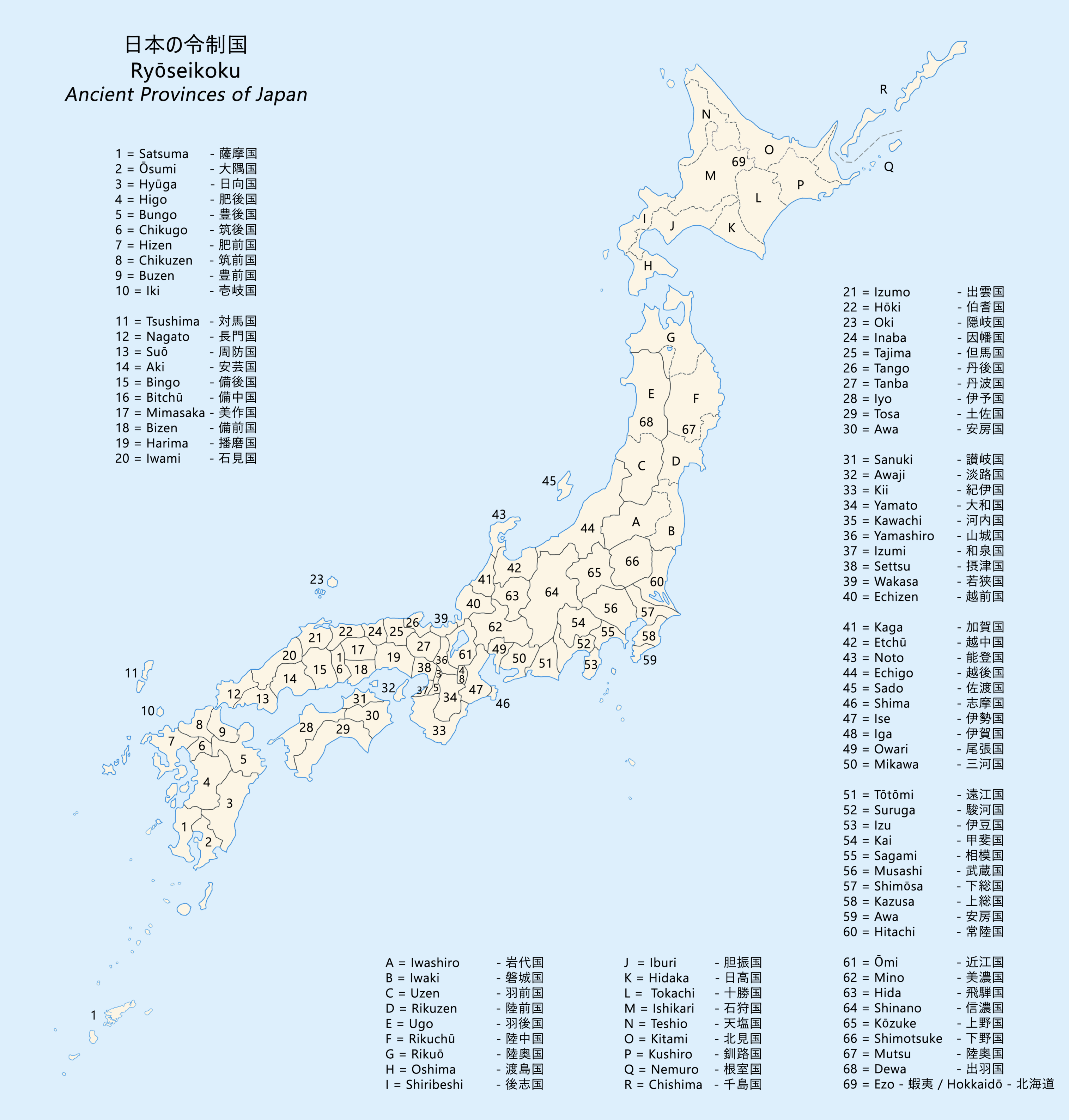|
Hatamoto
A was a high ranking samurai in the direct service of the Tokugawa shogunate of feudal Japan. While all three of the shogunates in Japanese history had official retainers, in the two preceding ones, they were referred to as ''gokenin.'' However, in the Edo period, ''hatamoto'' were the upper vassals of the Tokugawa house, and the ''gokenin'' were the lower vassals. There was no precise difference between the two in terms of income level, but a hatamoto had the right to an audience with the ''shōgun'', whereas gokenin did not.Ogawa, p. 43. The word ''hatamoto'' literally means "origin of the flag", with the sense of 'around the flag', it is described in Japanese as 'those who guard the flag' (on the battlefield) and is often translated into English as "bannerman". Another term for the Edo-era ''hatamoto'' was , sometimes rendered as "direct shogunal ''hatamoto''", which serves to illustrate the difference between them and the preceding generation of ''hatamoto'' who served var ... [...More Info...] [...Related Items...] OR: [Wikipedia] [Google] [Baidu] |
Tokugawa Shogunate
The Tokugawa shogunate (, Japanese 徳川幕府 ''Tokugawa bakufu''), also known as the , was the military government of Japan Japan ( ja, 日本, or , and formally , ''Nihonkoku'') is an island country in East Asia. It is situated in the northwest Pacific Ocean, and is bordered on the west by the Sea of Japan, while extending from the Sea of Okhotsk in the no ... during the Edo period from 1603 to 1868.Louis-Frédéric, Nussbaum, Louis-Frédéric. (2005)"''Tokugawa-jidai''"in ''Japan Encyclopedia'', p. 978.Nussbaum"''Edo-jidai''"at p. 167. The Tokugawa shogunate was established by Tokugawa Ieyasu after victory at the Battle of Sekigahara, ending the civil wars of the Sengoku period following the collapse of the Ashikaga shogunate. Ieyasu became the ''shōgun,'' and the Tokugawa clan governed Japan from Edo Castle in the eastern city of Edo (Tokyo) along with the ''daimyō'' lords of the ''samurai'' class.Nussbaum"Tokugawa"at p. 976. The Tokugawa shogunate organized ... [...More Info...] [...Related Items...] OR: [Wikipedia] [Google] [Baidu] |
Samurai
were the hereditary military nobility and officer caste of History of Japan#Medieval Japan (1185–1573/1600), medieval and Edo period, early-modern Japan from the late 12th century until their abolition in 1876. They were the well-paid retainers of the ''daimyo'' (the great feudal landholders). They had high prestige and special privileges such as wearing Daishō, two swords and ''Kiri-sute gomen'' (right to kill anyone of a lower class in certain situations). They cultivated the ''bushido'' codes of martial virtues, indifference to pain, and unflinching loyalty, engaging in many local battles. Though they had predecessors in earlier military and administrative officers, the samurai truly emerged during the Kamakura shogunate, ruling from 1185 to 1333. They became the ruling political class, with significant power but also significant responsibility. During the 13th century, the samurai proved themselves as adept warriors against the invading Mongols. During the peaceful Edo ... [...More Info...] [...Related Items...] OR: [Wikipedia] [Google] [Baidu] |
Gokenin
A was initially a vassal of the shogunate of the Kamakura and the Muromachi periods.Iwanami Kōjien, "Gokenin" In exchange for protection and the right to become '' jitō'' (manor's lord), a ''gokenin'' had in times of peace the duty to protect the imperial court and Kamakura. In times of war, he had to fight with his forces under the shōgun’s flag. From the mid-13th century, the fact that ''gokenin'' were allowed to become ''de facto'' owners of the land they administered, coupled to the custom that all ''gokenin'' children could inherit, brought the parcelization of the land and a consequent weakening of the shogunate. The ''gokenin'' class ceased to be a significant force during the Muromachi period and was supplanted by the figure of the '' daimyō''. During the successive Edo period, the term finally came to indicate a direct vassal of the shōgun, below an , meaning that they did not have the right to an audience with the shōgun. Etymology The terms ''gokenin'' and ''ke ... [...More Info...] [...Related Items...] OR: [Wikipedia] [Google] [Baidu] |
Mikawa Province
was an old province in the area that today forms the eastern half of Aichi Prefecture. Nussbaum, Louis-Frédéric. (2005). "''Mikawa''" in . Its abbreviated form name was . Mikawa bordered on Owari, Mino, Shinano, and Tōtōmi Provinces. Mikawa is classified as one of the provinces of the Tōkaidō. Under the ''Engishiki'' classification system, Mikawa was ranked as a "superior country" (上国) and a "near country" (近国) in terms of its distance from the capital. History Mikawa is mentioned in records of the Taika Reform dated 645, as well as various Nara period chronicles, including the Kujiki, although the area has been settled since at least the Japanese Paleolithic period, as evidenced by numerous remains found by archaeologists. Early records mention a "Nishi-Mikawa no kuni" and a "Higashi-Mikawa no kuni", also known as . Although considered one administrative unit under the ''Engishiki'' classification system, this division (roughly based at the Yasaku River) p ... [...More Info...] [...Related Items...] OR: [Wikipedia] [Google] [Baidu] |
Imagawa Clan
was a Japanese samurai clan that claimed descent from the Seiwa Genji by way of the Kawachi Genji. It was a branch of the Minamoto clan by the Ashikaga clan. Origins Ashikaga Kuniuji, grandson of Ashikaga Yoshiuji, established himself in the 13th century at Imagawa (Mikawa Province) and took its name. Imagawa Norikuni (1295–1384) received from his cousin the shōgun Ashikaga Takauji the province of Tōtōmi, and later that of Suruga. Located at Ounami no Kori, Mikawa (modern day Nishio, Aichi) mainly Suruga Province and Tōtōmi Province during the Warring States period Crests *Two hikiryou *Yoshimoto's version of the akaitori (pictured) *Two hikiryou and a paulownia planted in white soil Major figures * Imagawa Sadayo * Imagawa Yoshitada * Imagawa Ujichika * Imagawa Ujiteru * Imagawa Yoshimoto *Imagawa Ujizane Muromachi era * Imagawa Sadayo, was a renowned Japanese poet and military commander who served as tandai ("constable") of Kyūshū under the Ashikaga bakuf ... [...More Info...] [...Related Items...] OR: [Wikipedia] [Google] [Baidu] |
Edo Period
The or is the period between 1603 and 1867 in the history of Japan, when Japan was under the rule of the Tokugawa shogunate and the country's 300 regional ''daimyo''. Emerging from the chaos of the Sengoku period, the Edo period was characterized by economic growth, strict social order, isolationist foreign policies, a stable population, perpetual peace, and popular enjoyment of arts and culture. The period derives its name from Edo (now Tokyo), where on March 24, 1603, the shogunate was officially established by Tokugawa Ieyasu. The period came to an end with the Meiji Restoration and the Boshin War, which restored imperial rule to Japan. Consolidation of the shogunate The Edo period or Tokugawa period is the period between 1603 and 1867 in the history of Japan, when Japan was under the rule of the Tokugawa shogunate and the country's regional ''daimyo''. A revolution took place from the time of the Kamakura shogunate, which existed with the Tennō's court, to th ... [...More Info...] [...Related Items...] OR: [Wikipedia] [Google] [Baidu] |
Akamatsu Clan
is a Japanese samurai family of direct descent from Minamoto no Morifusa of the Murakami-Genji. Papinot, Jacques Edmond Joseph. (1906). ''Dictionnaire d’histoire et de géographie du Japon''; Papinot, (2003)"Akamatsu" at ''Nobiliare du Japon'', p. 1 retrieved 2013-4-11. History They were prominent shugo-daimyō in Harima during the Sengoku period. During the Ōnin no ran (1467–1477), Akamatsu Masanori was one of the chief generals of the Hosokawa clan. The head of the clan at Shizuoka in Suruga Province became a ''kazoku'' baron in 1887.'''' The Shinmen clan were a branch of the Akamatsu.Yoshikawa, Eiji. (1995) ''Musashi,'' p. 94 Select members of the clan * Akamatsu Norimura (1277–1350). Hall, John Whitney. (1999) ''The Cambridge History of Japan: Medieval Japan,'' Vol. 3, pp. 600-603./ref> * Akamatsu Norisuke (1314–1371). * Akamatsu Mitsusuke (1381–1441). Nussbaum, Louis-Frédéric. (2005) "''Kaikitsu-no-hen,''"''Japan encyclopedia,'' p. 456. * Akamatsu ... [...More Info...] [...Related Items...] OR: [Wikipedia] [Google] [Baidu] |
Takeda Family
The was a Japanese samurai clan active from the late Heian period until the late 16th century. The clan was historically based in Kai Province in present-day Yamanashi Prefecture. The clan reached its greatest influence under the rule of Takeda Shingen, one of the most famous rulers of the period. History Origin The Takeda are descendants of the Emperor Seiwa (858–876), the 56th Emperor of Japan, and are a branch of the Minamoto clan (Seiwa Genji), by Minamoto no Yoshimitsu (1056–1127), son of the '' Chinjufu-shōgun'' Minamoto no Yoriyoshi (988-1075), and brother to the famous Minamoto no Yoshiie (1039–1106). Minamoto no Yoshikiyo (1075–1149), son of Yoshimitsu, was the first to take the name of Takeda, which he took when his father granted him Takeda domain in Hitachi Province; thereafter, he was known as Takeda Yoshikiyo. Kamakura to early Azuchi–Momoyama periods In the 12th century, at the end of the Heian period, the Takeda family-controlled Kai Province. Alo ... [...More Info...] [...Related Items...] OR: [Wikipedia] [Google] [Baidu] |
Shugo
, commonly translated as “(military) governor,” “protector,” or “constable,” was a title given to certain officials in feudal Japan. They were each appointed by the ''shōgun'' to oversee one or more of the provinces of Japan. The position gave way to the emergence of the ''daimyōs'' (大名, feudal lords) in the late 15th century, as ''shugo'' began to claim power over lands themselves, rather than serving simply as governors on behalf of the shogunate. The post is said to have been created in 1185 by Minamoto no Yoritomo to aid the capture of Yoshitsune, with the additional motivation of extending the rule of the shogunate government throughout Japan. The ''shugo'' (military governors) progressively supplanted the existing ''kokushi'' (civil governors), who were appointed by the Imperial Court in Kyoto. Officially, the ''gokenin'' in each province were supposed to serve the ''shugo'', but in practice, the relationship between them was fragile, as the gokenin were ... [...More Info...] [...Related Items...] OR: [Wikipedia] [Google] [Baidu] |
Muromachi Period
The is a division of Japanese history running from approximately 1336 to 1573. The period marks the governance of the Muromachi or Ashikaga shogunate (''Muromachi bakufu'' or ''Ashikaga bakufu''), which was officially established in 1338 by the first Muromachi '' shōgun'', Ashikaga Takauji, two years after the brief Kenmu Restoration (1333–1336) of imperial rule was brought to a close. The period ended in 1573 when the 15th and last shogun of this line, Ashikaga Yoshiaki, was driven out of the capital in Kyoto by Oda Nobunaga. From a cultural perspective, the period can be divided into the Kitayama and Higashiyama cultures (later 15th – early 16th centuries). The early years from 1336 to 1392 of the Muromachi period are known as the '' Nanboku-chō'' or Northern and Southern Court period. This period is marked by the continued resistance of the supporters of Emperor Go-Daigo, the emperor behind the Kenmu Restoration. The Sengoku period or Warring States period, wh ... [...More Info...] [...Related Items...] OR: [Wikipedia] [Google] [Baidu] |
Kamakura Period
The is a period of Japanese history that marks the governance by the Kamakura shogunate, officially established in 1192 in Kamakura by the first '' shōgun'' Minamoto no Yoritomo after the conclusion of the Genpei War, which saw the struggle between the Taira and Minamoto clans. The period is known for the emergence of the samurai, the warrior caste, and for the establishment of feudalism in Japan. During the early Kamakura period, the shogunate continued warfare against the Northern Fujiwara which was only defeated in 1189. Then, the authority to the Kamakura rulers waned in the 1190s and power was transferred to the powerful Hōjō clan in the early 13th century with the head of the clan as regent ( Shikken) under the shogun which became a powerless figurehead. The later Kamakura period saw the invasions of the Mongols in 1274 and again in 1281. To reduce the amount of chaos, the Hōjō rulers decided to decentralize power by allowing two imperial lines – Northern and Sout ... [...More Info...] [...Related Items...] OR: [Wikipedia] [Google] [Baidu] |




